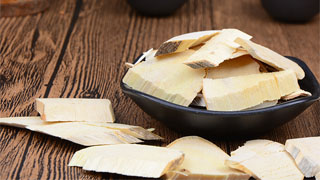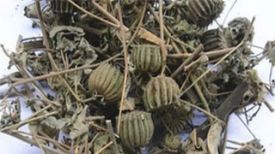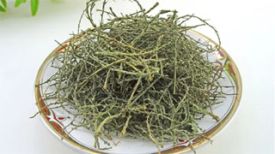
1. Aliases
Three forked bitter, three branch bitter, three forked bitter, three forked tiger.2. Plant morphology
Small trees or shrubs. The bark is gray white or bluish gray, and the whole plant is bitter. Leaves opposite, with 3 leaflets; The small leaves are elliptical or elliptically lanceolate, with the tip gradually or sharply pointed, the base wedge-shaped and extending downwards, and the entire margin may have irregular shallow waves. Cymes arranged in a corymb style, axillary, flowers unisexual, yellow white, slightly fragrant; Sepals 4, broadly ovate, petals 4, ovate to elliptical in shape, male flowers with 4 stamens, and reduced pistils; The degenerated stamens of female flowers are shorter than the petals, the ovary is superior, 4-loculed, densely hairy, the stigma is head shaped, and 4-lobed. The follicles are often 2-3 clustered, with 1 or 4 rare, dark yellow brown to reddish brown, and have glandular spots. Seeds ovate, black.
3. Origin distribution
Born in sparse forests or shrubs on hills, plains, mountains, and streams. Distributed in Guangdong, Hainan, Guangxi and other places.
4. Harvesting and processing
It can be harvested all year round. Cut off tender branches and leaves, cut them into sections, and dry them in the shade or sun.
5. Characteristics of medicinal herbs
Many branches and leaves have been cut into small pieces. The surface of the stem bark is grayish blue with white patches, and the bark is prone to peeling. The wood is white and dense with fine knots. There is a white pulp in the center of the cross-section of the stem and branch, which has a pungent (hala, baiyou) odor and a bitter taste. After flattening, the intact leaves form three finger shaped compound leaves with long stalks; Small leaves are papery, with a long pointed tip and a narrow base that extends downwards into a small petiole. They are whole or irregularly microwave shaped. The upper surface of the leaves is yellow green and smooth, with small oil spots visible. The color of the lower surface of the leaves is lighter. Rubbing it has a fragrant and extremely bitter taste.
6. Nature, taste, and meridian tropism
Cold in nature and bitter in taste. Guigan Meridian, Lung Meridian, and Stomach Meridian.
7. Effect and function
Clear heat and detoxify, promote qi circulation and relieve pain, and relieve dampness and itching. A heat clearing and dampness reducing medicine classified under the category of heat clearing medicine.
8. Clinical applications
Dosage 15-30 grams, decoct and take, or grind powder into powder. Mash and apply fresh leaves for external use or wash the affected area with boiling water. Used to treat febrile diseases such as persistent high fever, sore throat, heat toxic sores, rheumatic pain, damp fire bone pain, venomous snake bites, stomach heat pain, and bruises. External use for treating skin damp heat ulcers, skin itching, and hemorrhoids.
9. Pharmacological research
Trident extract has liver protection, hydroxyl radical scavenging effects, and can inhibit Shigella flexneri.
10. Chemical composition
Leaves and roots contain alkaloids. The leaves also contain volatile oil, which is mainly composed of a-pinene and furfural. The entire plant contains edulinine, ribalinine, and isoplatydemine.
11. Taboos for use
Those with deficiency cold should use it with caution.
12. Related prescriptions
① In the early stage of treating encephalitis, take two liang of bitter clover leaves and boil them in water. (Guangxi Herbal Medicine).
② Treatment for insect and snake bites, boils, falls, and sprains: apply crushed fresh leaves of Sanya Ku externally. (Guangzhou Army's Handbook of Common Chinese Herbal Medicine)
The content of the article is for clinical reference only. Non professionals in traditional Chinese medicine are not allowed to try medication.


